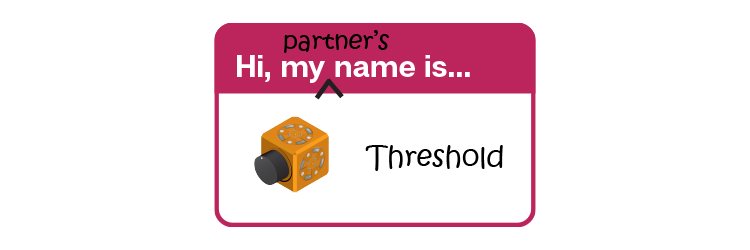Every teacher has their own brand of first week of school activities. Some teachers start with a blank and empty classroom, then construct the space collaboratively with students. Other teachers spend the time playing fun ice breakers and learning names, while still others hop straight into the curriculum. I fall on another spot on that spectrum.
My favorite way to start the school year is to use the classroom routines and protocols that I want students to be able to use later in the year as the structure for getting to know each other. This means learning Turn’n’Talk as a means of short interviews, or practicing turning in writing assignments after writing Introduce-Your-Classmate narratives.

Regardless of your class schedule, that first week (and frankly, month) of school is all about training students into routines and expectations from how to enter the classroom to how to work together during class.
Cubelets are a terrific tool to use during this time. Since Cubelets are so intuitive in their design and naturally encourage students to communicate while working in groups, they make an excellent tool for introducing and practicing collaboration skills.
Depending on your timeline and grade level, you could have students investigate Cubelets in an Open Play lesson, then collaboratively create your classroom expectations after the first day of exploring Cubelets. Some teachers like to have jobs for students within a group work environment, other teachers prefer to have a set of clear expectations about sharing and treating each other respectfully. Regardless of your preference, Cubelets are a great way to get kids talking to each other while also thoughtfully transitioning them from summer break to school expectations.
For the rest of the week, you might choose to do more specific Cubelets investigations (Investigating THINK Cubelets or Investigating Two SENSE Cubelets are my favorites) that have an accountability component within them to practice and refine the collaboration expectations. Accountability could include written reflections on the quality of the group interaction during the investigation or it could assess the content of the lesson specifically (i.e., compare and contrast THINK Cubelets, explain what happens to a robot with two SENSE Cubelets).
Both of these investigations are also a great time to introduce your expectations about submitting written work. Cubelets lesson plans frequently recommend students write their thoughts using the C-E-R model (Claim-Evidence-Reasoning), but you may have a different format you prefer. By introducing it early with an intuitive tool like Cubelets, students are able to focus on the new content instead of the format later in the year.
Every teacher has a different approach to their first week of school, but regardless of your preferences, Cubelets provide flexible and rigorous content around which to establish the norms of your classroom. Enjoy your new students, and let us know how Cubelets are helping you reach your learning goals by tagging @modrobotics on Twitter using #CubeletsChat!
Enjoyed this blog post? Sign up for the #CubeletsChat newsletter to receive the next blog post straight to your inbox. Plus join the discussion on twitter using the #CubeletsChat hashtag!


